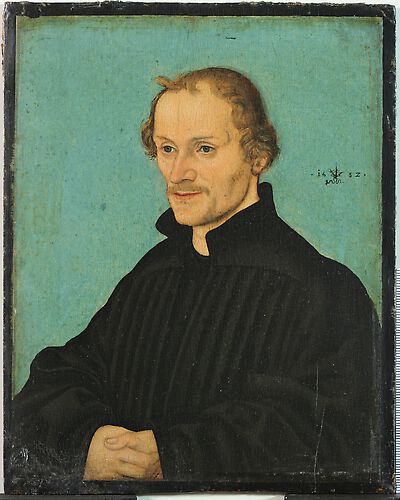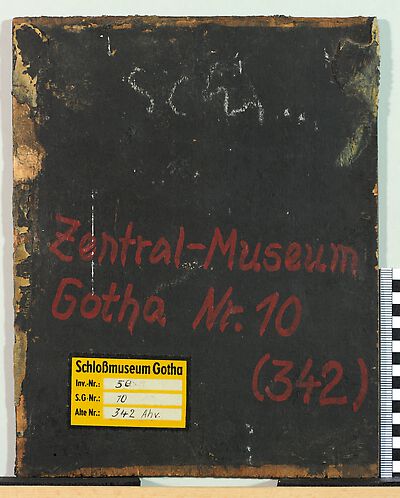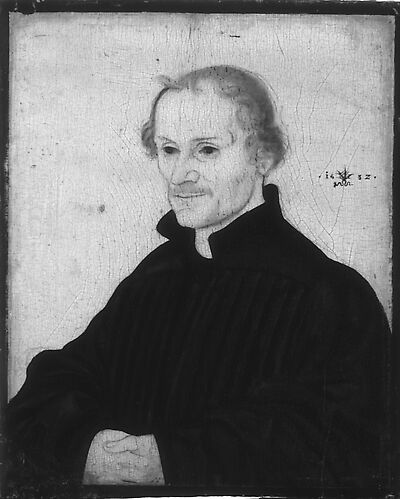The painting in Gotha corresponds with a portrait type for Philipp Melanchthon, which was reproduced numerous times from 1532. Further examples of the same format are preserved in Berlin, Dresden, Regensburg and Munich. It shows the scholar and reformer in three-quarter profile against a monochrome blue background facing left. He
The painting in Gotha corresponds with a portrait type for Philipp Melanchthon, which was reproduced numerous times from 1532. Further examples of the same format are preserved in Berlin, Dresden, Regensburg and Munich. It shows the scholar and reformer in three-quarter profile against a monochrome blue background facing left. He is wearing a black gown and his hands are folded in his lap.
[Carrasco, Exhib. Cat. Gotha, Kassel 2015, 154]
- Attributions
-
Lucas Cranach the Elder
Hans Cranach
Attributions
| Lucas Cranach the Elder | [Exhib. Cat. Gotha 2015, No. 34] [Exhib. Cat. Gotha 1994, 25] |
| Hans Cranach | '?' [Exhib. Cat. Gotha, Kassel 2015, 154, No. 34] |
| Workshop Lucas Cranach the Elder | [Exhib. Cat. Chemnitz 2005, 477] |
- Production date
- 1532
Production date
| 1532 | [dated] |
- Dimensions
- Dimensions of support: 19 x 15.2 x 0.25 cm [cda 2010]
Dimensions
Dimensions of support: 19 x 15.2 x 0.25 cm [cda 2010]
- Signature / Dating
Artist's insignia above the proper left shoulder: winged serpent with elevated wings, facing left and dated '1532'; in black paint.
Signature / Dating
Artist's insignia above the proper left shoulder: winged serpent with elevated wings, facing left and dated '1532'; in black paint.
'The shape of the wings and the style of writing is unusual'
[Exhib. Cat. Gotha 1994, 25]
- Inscriptions and Labels
Reverse of the panel: - in the centre:
handwritten in red ink: 'Zentral-Museum/Gotha Nr. 10/(342)'- bottom left:
printed yellow …Inscriptions and Labels
Stamps, Seals, Labels:
Reverse of the panel: - in the centre:
handwritten in red ink: 'Zentral-Museum/Gotha Nr. 10/(342)'
- bottom left:
printed yellow label: 'Schloßmuseum Gotha/Inv.-Nr.:/S.G. Nr.:/Alte Nr.:'; handwritten entry in black ink: '50', '10', '342 Ahv.'
- Owner
- Stiftung Schloss Friedenstein, Gotha
- Repository
- Stiftung Schloss Friedenstein, Gotha
- Location
- Gotha
- CDA ID
- DE_SMG_SG10
- FR (1978) Nr.
- FR-none
- Persistent Link
- https://lucascranach.org/en/DE_SMG_SG10/
- bottom left:



